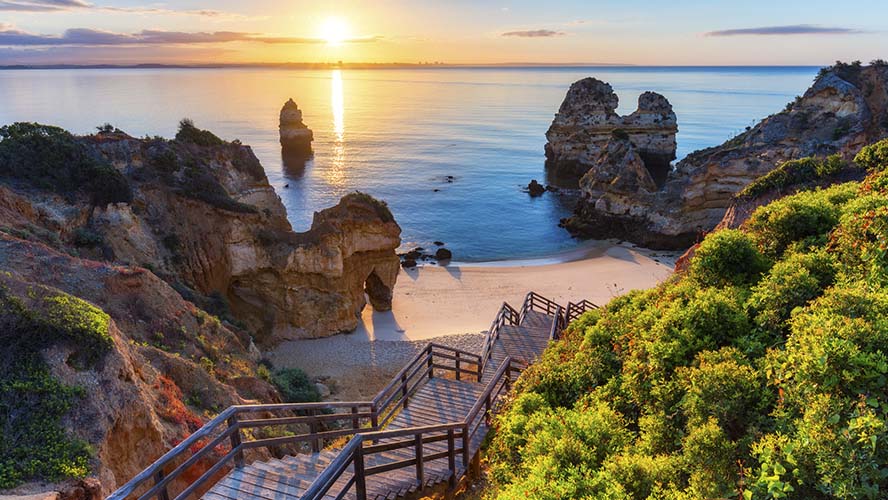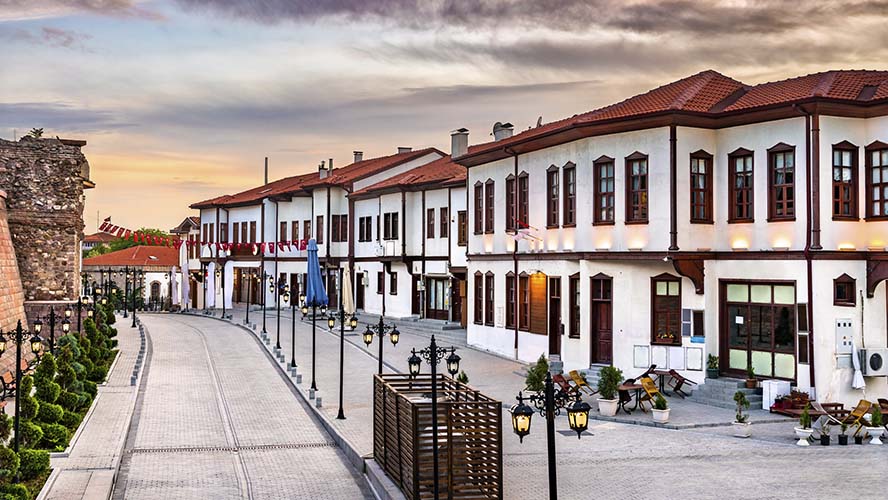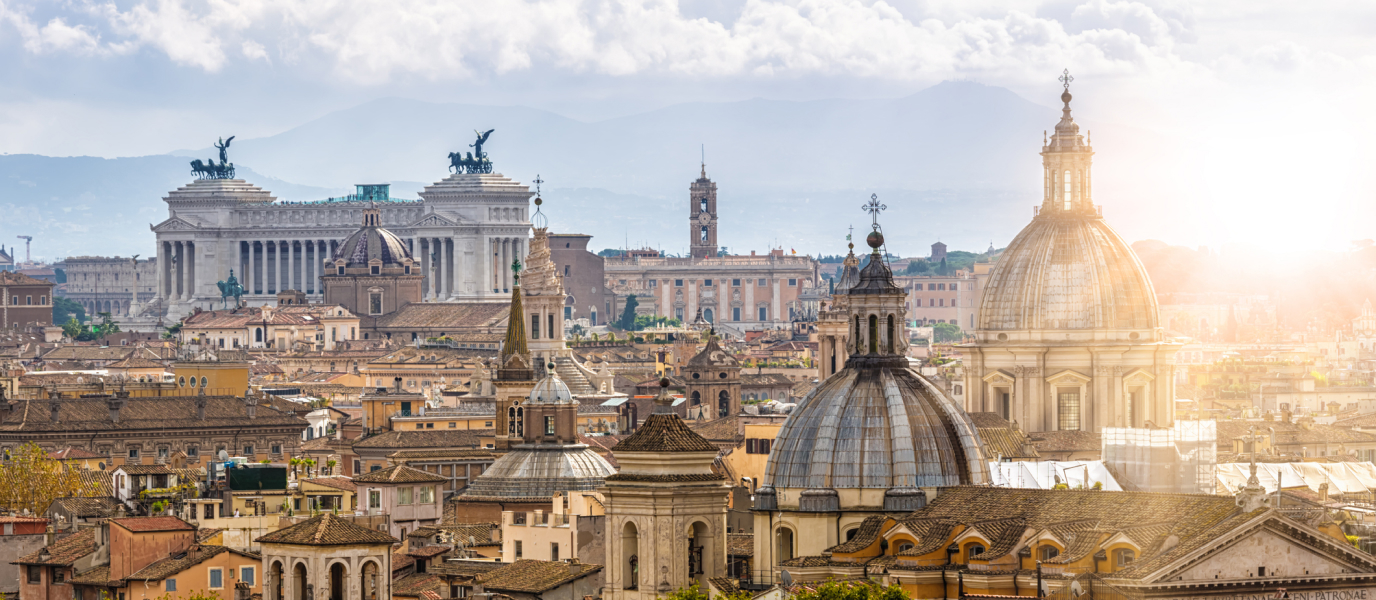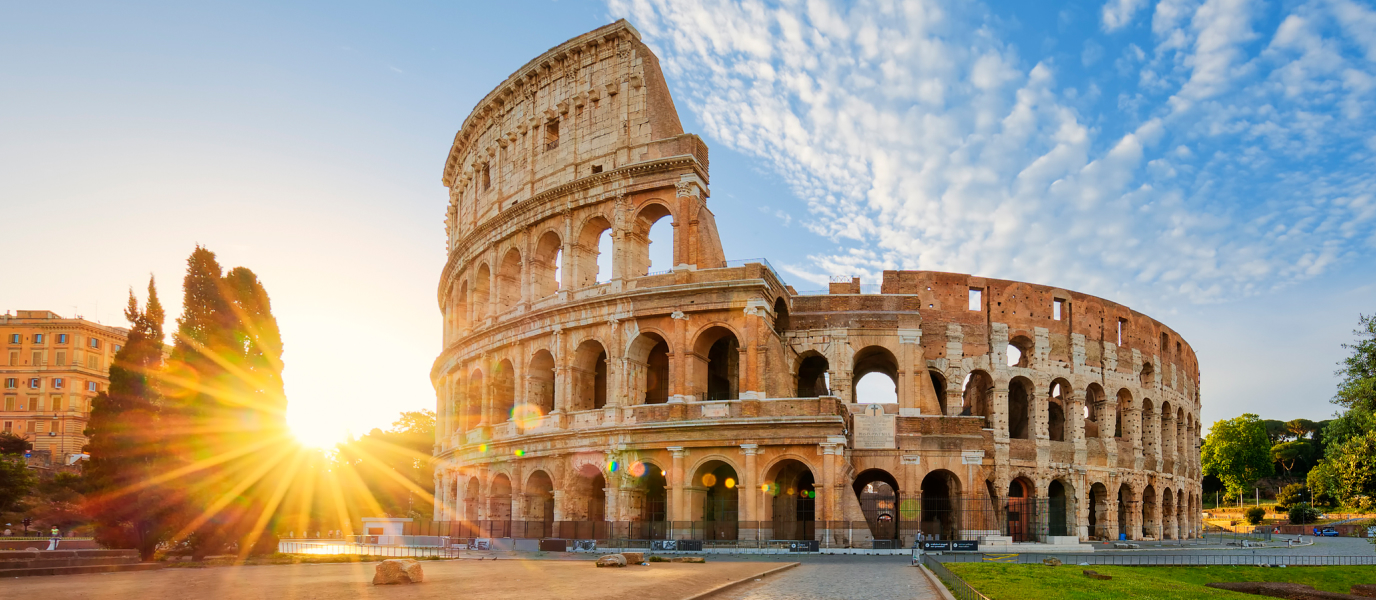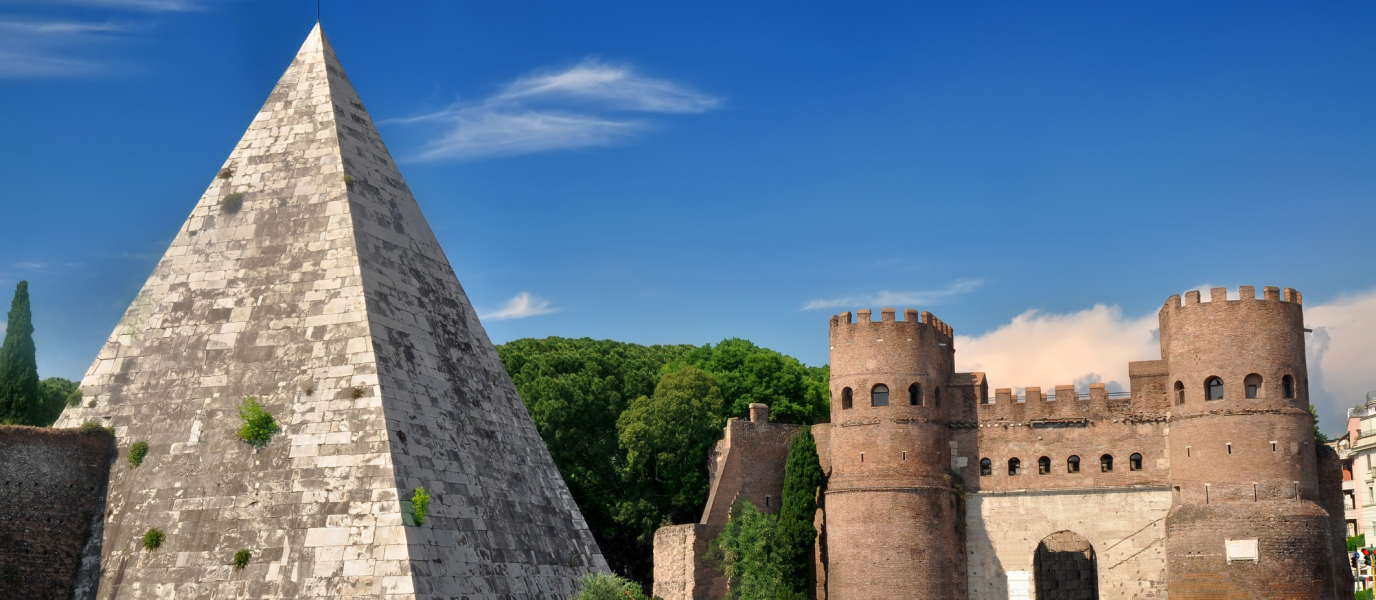Rome has many ways of seducing travellers, and its historical and religious heritage captivates all those who visit. Don’t be surprised when you stumble across one tiny church after another as you wander through Rome’s maze of streets. Step inside and regain your inner peace before you continue to explore this amazing city. Those seeking a spiritual experience are sure to find one in a place where several periods of history come together. Everywhere you turn, one or other basilica or church will make you stop and contemplate.
Rome has some 900 religious buildings waiting to be discovered, including the Basilica Papale di San Pietro in Vaticano, the Basilica Papale di San Paolo fuori le Mura and the Basilica di Santa Maria Maggiore, along with a plethora of smaller, mysterious churches tucked away. You’ll be blown away by their majesty or moved by their restraint. Many of Rome’s churches safeguard historical artefacts and highly valuable works of art.
Before embarking on a tour of Rome’s religious side, make sure you’ve packed plenty of curiosity and a thirst for discovery!
Rome’s main basilicas and churches
Basilica Papale di San Pietro in Vaticano
St Peter’s Basilica (link: St Peter’s Basilica) is an obligatory visit for all Catholics and a popular tourist site. This famous and majestic church is where the Pope leads the most important religious events in the Catholic calendar. The early basilica was built by order of Emperor Constantine in the 4th century. It stands upon the tomb of St Peter and houses the tombs of several popes. Significant reconstruction works took place from 1506 to 1626 involving the architects Bramante, Michelangelo and Carlos Maderno.
The spectacular facade boasts five entrance doors and sculptures of the apostles, and with a capacity of 60,000 worshippers this is the largest Christian church in the world. You’ll feel like you’re in a museum as you wander around and admire Michelangelo’s Pietà, Bernini’s Baldachin and the Medieval Statue of St Peter Enthroned, to mention a few of the church’s treasures. The dome designed by Michelangelo will leave you gobsmacked. Before you leave, climb to the top of the church for some beautiful panoramic views of Piazza San Pietro, the Vatican and Rome itself.
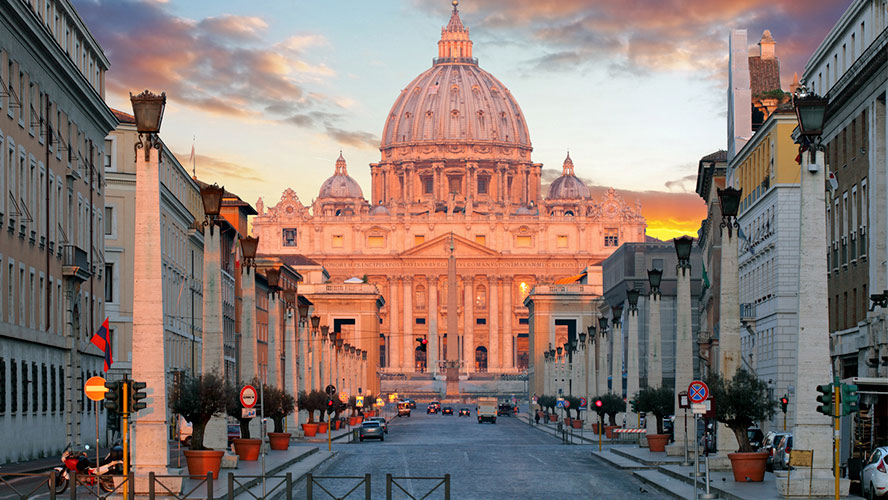
Basilica di Santa Maria Maggiore, legend and legacy
The Basilica of Saint Mary Major (link: Basilica of Saint Mary Major) is the largest church in Rome dedicated to worship of the Virgin Mary and legend says that Mary herself decided where the church should be raised. Abundant snow apparently fell in the height of August on Esquiline Hill, where the church now stands. It was taken as an omen, and Pope Liberius (4th century) marked out the perimeter of the church in the snow, hence its other name: Our Lady of the Snows.
The current basilica was built on top of the old one in the 5th century when Pope Sixtus III was head of the Catholic Church. It’s the only major basilica with its original paleochristian structure still intact. Pope Sixtus III also commissioned the 42 valuable panels in the central nave which depict scenes from the bible. The basilica houses the tomb of Bernini as well as several of his works. The Sforza Chapel is another of Michelangelo’s masterpieces, and the Medieval bell tower is one of the most ornate that you’ll see in all of Rome.
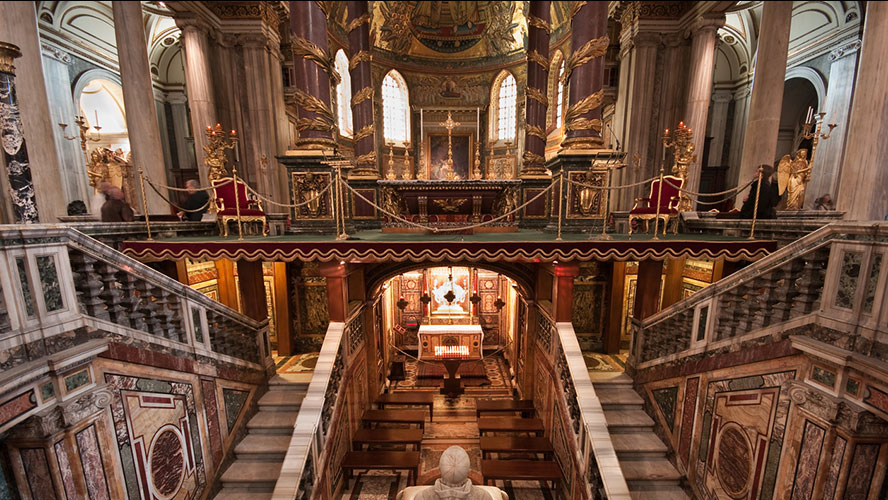
The oldest major basilica: Arcibasilica Papale Romana Maggiore di San Giovanni in Laterano
The Archbasilica of Saint John Lateran was the first basilica in Rome and is the oldest in the world. It was built in the 4th century by Emperor Constantine when persecution of Christians ended, and for 1,000 years was the seat of the Catholic Church, until the papal residence was moved to the Vatican.
The basilica was reworked by Borromini in the 17th century. It houses part of the Jubilee fresco cycle painted by Giotto and other particularly noteworthy features including the Corsini Chapel by Alessandro Galilei (he also designed the main facade) and the beautiful 13th-century Cosmatesque cloister by the Vassellectus.
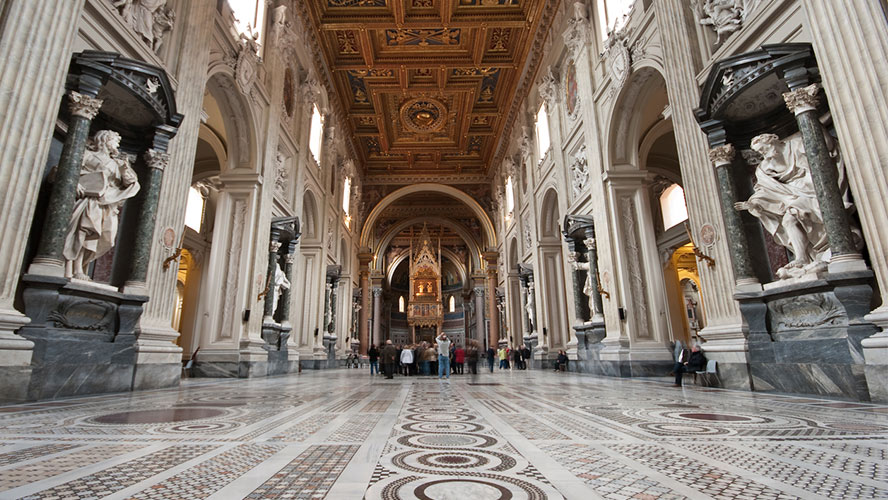
Basilica Papale di San Paolo fuori le Mura
Saint Paul’s Outside the Walls is the second largest basilica in Rome after St Peter’s. It gets its name from the fact that it stands beyond the walls of Ancient Rome. Don’t let the location put you off as the visit is well worth it. The basilica was built by order of Constantine in the 4th century in the place where St Paul died. What was once a relatively small church was enlarged over time to become the grandiose building we know today.
The fire that set the basilica ablaze on 15 July 1823 left a deep scar on the Romans, and the cardinals of the time couldn’t bring themselves to share the news with the gravely ill Pope Pius VII. Restoration works took an entire century and thankfully there are still remains of the original building. The magnificent ciborium by Arnolfo di Cambio was miraculously saved, and the 11th-century Byzantine door was restored after the fire. In 2006, a hole was created in the basilica enabling visitors to see the marble wall of St Paul’s tomb.
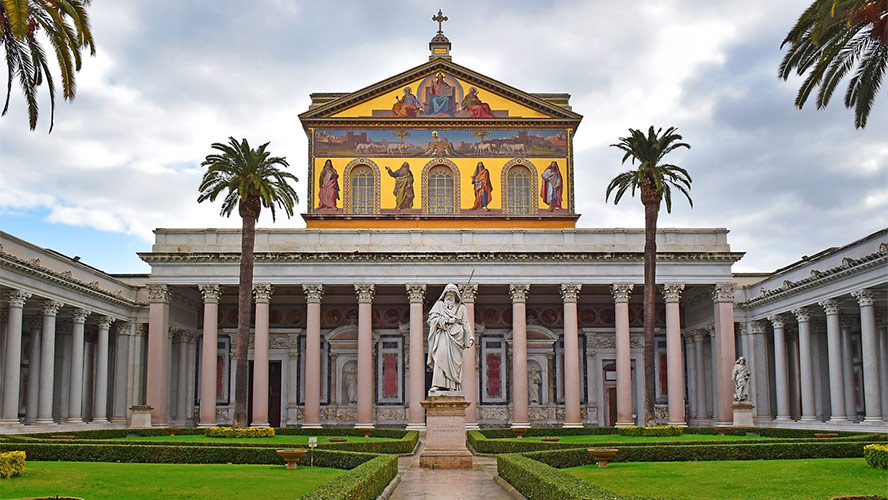
Santa Maria sopra Minerva
The pretty and popular church of Santa Maria sopra Minerva is the only Gothic church in the Eternal City. The church is long with three naves separated by a series of arches and columns. You’ll find it in the quiet Piazza Minerva, along with an obelisk resting atop an elephant by Bernini.
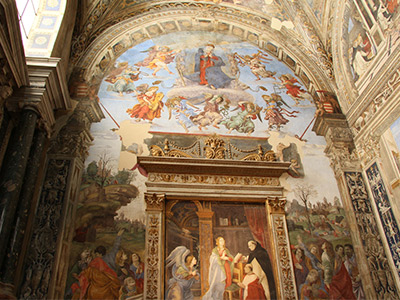
The simple facade doesn’t give any clues to the treasures hiding within, such as the elegant and colourful rib vaults in the naves. The Cafara Chapel in honour of St Thomas Aquinas, complete with priceless Renaissance frescoes by Filippino Lippi, is also captivating. Don’t miss Michelangelo’s Risen Christ and several pieces by Bernini.
The stunning Santa María del Popolo
This small Renaissance-style church in Piazza del Popolo, built in the 15th century by Pope Sixtus IV (subsequently altered in the 17th century), is a captivating place of worship. Its interior boasts works by Raphael, Bernini and Caravaggio.
The roof spaces are lower than you’d expect and, strangely, are completely bare. The various chapels are striking by contrast: the Cerasi Chapel has two paintings by Caravaggio, and the Chigi Chapel was designed and decorated by Raphael.
Trinità dei Monti and other churches in Rome
Rome is so packed full of churches that most visitors choose which ones to visit based on their architectural and artistic value. The 16th-century Trinità dei Monti, at the top of the famous Spanish Steps, is particularly attractive with its frescoes by famous artists of the time.
Right in the heart of the Italian capital in the Piazza Sant’Ignazio is the eponymous Church of St Ignatius of Loyola. It was built in the Baroque style and has an impressive Latin cross in the centre. The interior is sumptuous, and the frescoes in the vault along with the false ‘dome’ are particularly fascinating.
In you’re in the Trastevere neighbourhood, stop in at the Medieval Basilica di Santa Maria in Trastevere. Most of the building was constructed in the 12th century using marble from the Caracalla thermal springs. Among its treasures are the beautiful interior mosaics by Pietro Cavallini and the incredible dome complete with four angels in the Avila Chapel.





























